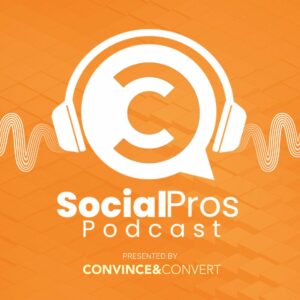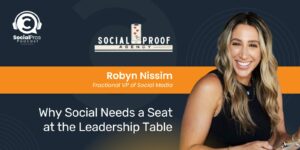Hosted By
About Social Pros Podcast:
Social Pros is one of the longest-running marketing podcasts in existence (10 YEARS and counting), and was recently recognized as the #1 Audio/Podcast Series by the Content Marketing Awards.
Our purpose? Making sure that we speak to real people doing real work in social media.
Listeners get inside stories and behind-the-scenes secrets about how teams at companies like Google, Reddit, Glossier, Zillow, Lyft, Marvel, and dozens more, staff, operate, and measure their social media programs. With 600+ episodes, the Social Pros Podcast brings the humanity of social media to the forefront, while providing incredibly useful marketing strategies that listeners can immediately implement.
Follow Social Pros on LinkedIn.
To inquire about becoming a guest or show sponsor, please email our Executive Producer, Leanna Pham, at leanna@convinceandconvert.com.
Apple Podcast Reviews:
The Social Pros podcast has quickly become a favorite in my feed! I'm consistently impressed by the engaging conversations, insightful content, and actionable ideas. I truly learn something every time I listen!
@Arlie KThis is absolutely an awesome listen for anyone in communications or social media!!
@Will31CThis podcast has become one of my staple weekly podcasts for learning about marketing! Love the conversations that they have and it's always enjoyable and educational!
@Simonstone95Love the podcast - informative, in depth and spot on for any business size.
@MissTriathlon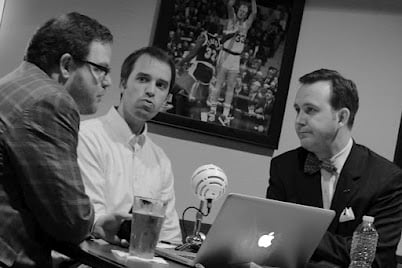
This is Episode 2 of the Social Pros Podcast : Real People Doing Real Work in Social Media. This episode features Scott Monty, the global head of social media for Ford Motor Company. Read on for insights from Scott, our “Work It Out” advice segment, and Eric’s Social Media Stat of the Week (this week: do brands […]
 This is Episode 2 of the Social Pros Podcast : Real People Doing Real Work in Social Media. This episode features Scott Monty, the global head of social media for Ford Motor Company. Read on for insights from Scott, our “Work It Out” advice segment, and Eric’s Social Media Stat of the Week (this week: do brands use free or paid social media tools?).
This is Episode 2 of the Social Pros Podcast : Real People Doing Real Work in Social Media. This episode features Scott Monty, the global head of social media for Ford Motor Company. Read on for insights from Scott, our “Work It Out” advice segment, and Eric’s Social Media Stat of the Week (this week: do brands use free or paid social media tools?).
Next week’s guest is Justin Levy from Citrix Online.
Listen Now
Click the play button to listen here:
[podcast]http://socialpros.podbean.com/mf/play/ndijyu/SocialProsEpisode2.mp3[/podcast]
Download the audio file: http://socialpros.podbean.com/mf/play/ndijyu/SocialProsEpisode2.mp3
The RSS feed is: http://feeds.feedburner.com/socialprospodcast
Find us on iTunes too!
Please Support Our Sponsors
Huge thanks to Argyle Social for their presenting sponsorship, as well as Infusionsoft and Jim Kukral at DigitalBookLaunch. We use Argyle Social for our social engagement; we use Infusionsoft for our email; and Jim is our guest host for the podcast and a smart guy)
Social Pros Transcript For Your Reading Enjoyment
Transcription services from our friends at Speechpad.com

Jay: Welcome to Social Pros. I am Jay Baer accompanied by the man, the myth, the legend, Eric Boggs. A very special guest on the show today, Mr. Scott Monty, Global Poobah of social media for a little startup in Detroit called Ford Motor Company. It’s actually amazing we’re here live. This is only the second episode of Social Pros, and we’re already breaking out of the format to do a live show in some crazy sports bar in Tampa. We’re here for Social Fresh.
Eric: Episode three, clip show and show the greatest hits.
Jay: Episode three, we go to Disneyland, and then there’s a rodeo. We introduce the young cousin. It’s actually interesting to have Scott here as the guest on the second show, because some people who have read Convince & Convert for a long time may remember I used to do an interview program called Twitter 20, where I interviewed people live on Twitter. Mr. Scott Monty was actually the second guest on that program, and we did it live at the MarketingProfs Digital Marketing Mixer in Scottsdale. There’s massive synergy here.
Eric: What was the fate of the Twitter 20?
Jay: You know what happened? I started that three and a half years ago. We actually have an eBook of all the greatest hits of that program. But as Twitter got so big and so cacophonous, then it became really mechanically difficult to do one-on-one interviews. The stream got too messy.
Eric: Well, if it made it to a greatest hits, that’s pretty good.
Jay: We did. We did like 22 of them or 24 of them or something like that.
Scott: And I’m honored, once again, to be number two.
Jay’s Thought of the Week
Jay: Exactly. In everything but guest hosting. So, we’ll start off the show as we always do with a thought of the week. My thought of the week is this, Eric. It wasn’t so long ago that it would have been unthinkable, unconscionable to show your Super Bowl commercial before it actually aired. It would have been crazy talk.
Eric: Definitely.
Jay: Now, the pendulum has swung almost all the way to the other side where almost every commercial was seen before the game. Is that a good idea, or is that just insanity?
Eric: My wife is like many wives in the sense that she recorded the Super Bowl so she could watch halftime and the commercials multiple times. I didn’t really watch the game. That’s what happens when you run a startup and you have a baby and you’ve just got other things to do. But there were multiple times where my wife shouted for me to come into the living room and say, “Ooh, Eric, this is the one with Ferris Bueller.” So they were so hyped before the show that she knew it was coming before it was coming, and there was just this sense of anticipation and eagerness. I think it’s brilliant. All of those commercials are going to live on YouTube forever anyway. Why not just go ahead and get it out there?
Jay: Yeah, but if everybody’s doing it, is it brilliant? The problem with marketing is that we insist on killing the golden goose. We can’t help it. Now the pace of change is so quick, as soon as somebody has a good idea, it’s beat to death in 20 minutes.
Scott: Don’t be a lemming. Zig while others zag.
Jay: If you’re doing the same thing that everybody else is doing, you by definition have no competitive advantage.
Eric: Which is an excellent segue to Mr. Scott Monty, who just gave a talk at Social Fresh in Tampa, which is great by the way, Social Fresh. Scott made a point to call out that Ford does not do Super Bowl commercials anymore, which is mind-boggling considering that car companies and beer companies have bankrolled for the years.
Scott: They’ve pretty much made the Super Bowl what it is, right?
Eric: Yeah. Talk to us a little bit about that.
Scott: For one, our product cadence this year does not align with the timing of the Super Bowl. We’ve got major vehicles coming out in May and in September, and that really doesn’t make sense for us to buy advertising now, primarily because, from a legal perspective, we’re restricted in advertising only within 60 days of the launch of a vehicle. So one, we can’t from a legal perspective.
Jay: You can’t advertise earlier than 60 days?
Scott: Exactly. We can’t run advertising any farther out than 60 days.
Jay: Is that in case, not in your case, but in case a car company goes out of business before the model exists?
Scott: It’s probably more to do with production delay and different expectations . . .
Jay: That’s why you don’t see any Saab commercials 90 days out or anything like that, because you never know.
Scott: It’s also a strategic decision. Everybody else is there spending exorbitant sums of money. We are not. We’re not there, and we’re not spending exorbitant sums of money. We have a limited marketing budget that we have to work with. It’s large, but it’s limited, and we want to spend it in the most effective way possible, not being part of the rest of the crowd.
Jay: You saw also the number of tweets during the game broke the record for the number of tweets per second, 10 million or something crazy thing.
Scott: 10,000 per second I think was the number. (actually, 12,233)
Jay: Yeah, which stands to reason.
Scott: And only half of them were about Madonna’s age.
Jay: Yeah, and the rest were her hamstring.
Eric: That’s what my wife was talking about, by the way.
Jay: Yeah. Women of a certain age were glued to that Madonna performance and probably rightly so.
Scott: Yeah, she looked a little slow to me.
Jay: Yeah, the hamstring. She had a pulled hammy in practice.
Scott: That’s what I’m going with.
Eric: Regardless, Madonna gets a retweet, plus one, and a like from me for her halftime performance.
Jay: A for effort. Exactly. Do you think this whole social TV, whether it’s American Idol or Super Bowl or what have you, this back channel, we’re watching it with one eye, we’re tweeting it with the other eye, is that ultimately a good thing? Because clearly you’re taking attention away from the core medium, which is television. I watch TV with an iPad religiously, and there’s no way you’re watching TV with the same amount of attention as you were before you had an iPad in your lap.
Scott: Well, I agree, but think about it this way. I actually wrote about this last year. The notion of live television having gone away seemingly, we’re all on DVDs or TiVo or whatever. To me, creating a social experience around a television show, whether it’s a premiere, a season finale, a special episode, whatever, you’re basically creating a digital living room of 100 million people. We used to sit around television sets with families, or farther back sit around the radio and watch the radio back in the ’40s and ’50s before there was television, and it was a shared experience. People would have that experience within their families. Now, it’s just a larger digital family. I think that connection that people are seeking, that back channel commentary, whether it’s snarkiness or sharing a love of a good joke or commercial or whatever it happens to be, that unites people together. So I think we’re actually seeing a return, in some ways, to live television and live events rather than a flee from them.
Jay: Interesting.
Eric: Conferences are the same thing. You saw, too. When you’re on the stage at a conference, you have to . . . I know when I think about building my presentations, I build them for the Twitter audience just as much as I build them for the live audience.
Scott: You’ve got to have those sound bites in there. I’m looking through here now (note: social fresh tweets). One thing I knew would end up here and I didn’t intend for it to be was that I said, “How frigging lazy to find us on Facebook.”
Jay: You saw what Kip from HubSpot did. He actually had his tweets in a quote bubble with a Twitter icon.
Scott: Yeah. That’s like he knew it was coming. Right?
Jay: Let me bludgeon you to death.
Eric: All the act was like, “Please tweet this.”
Scott: “Just take a photo of this screen.”
Jay: Instagram it and then share that. It’s fantastic! Speaking of today’s presentations, both Scott and Eric gave great presentations here at Social Fresh today. Eric, one of the stats that you had in your presentation was very interesting and got a real rise out of the audience. We’re going to use that as this week’s social media stat of the week. Cue stat of the week intro music.
Eric’s Social Media Stat of the Week: 91% of Big Online Retailers are Using Free/Cheap Social Media Tools
Eric: So, Argyle has done some research in the social media marketing practices of online retailers, which is a core segment for us and just an interesting segment in general. We took the Internet Retailer 500 as our sample, and we took 38 data points, publicly available information. One of the things that stood out was their usage of social media management tools. We found that 91% of the Internet Retailer 500 are using free or cheap – when I saw cheap, I mean $50 a month or less – social media management tools.
That’s interesting for a couple reasons. One, it indicates that there’s not a lot of investment in the space yet. Two, when you compare that to the technology spin that retailers are making in shopping cart platforms, email marketing platforms, social is a blip. It got a rise out of the audience. It got a rise out of the Twitter back channel. For me, as a CEO in the Internet space, I’m encouraged by that. I think the market is going to continue to evolve. Someone asked a question about how many of those are actually free versus cheap. How many people are actually using native Facebook, native Twitter versus TweetDeck or HootSuite, something like that? My hunch is that of that 91%, the majority of those are actually using the native tools on the platforms.
Jay: Do you think some people have moved to native because of the imbroglio with Facebook, where they were condensing third party tools and posts through apps and that whole thing, and that the word has not gotten out that that’s not as much of an issue anymore? Is that a possibility, or is that too inside baseball?
Eric: I think it’s a little too inside baseball. At Argyle, the deals that we win, typically we’re not displacing another competitor. We’re displacing logging into Facebook and logging into Twitter. So I don’t necessarily think it’s that. I think it’s more reflective of a maturing market. At Ford, do you guys use social tools, or are you guys logging right into Facebook? Or is it a mixed bag?
Scott: Both. When there’s free stuff to go around, who’s going to say no to that? You said cheap technology. It’s cheap in terms of cost, not in terms of actual output. The results we get are still okay. Now, Facebook doesn’t have the most robust analytics in and of itself, but it’s okay for what it is right now. We’re not going to waste money on a third-party solution that can basically extract the same stuff that we’re going to get out of Facebook anyway.
Jay: It’s an X and Y axis, right? So you have labor in your organization to actually do these things, and then you have software which theoretically makes these things easier or better. It would be really interesting to redo this study and say, “What tools are you using, and how many people do you have on your social media team?” Because I actually bet that at some point, the more people you have, the more likely you are to use free tools, because you don’t need the software to help you.
Eric: That’s a good point.
Jay: Thank you, Eric Boggs.
Eric: This is sort of off the top of my head when I think about Argyle’s customer base. B2B teams tend to be more spread out. There tends to be more people using the tools. Online retailer teams, the use case is typically somebody in marketing or the person in email marketing, and it’s a person or maybe a team of two or three. I think as your team federates and there’s more organizational machinery, without a doubt, the workflow that these tools enables becomes enormously valuable. For us at Argyle, we think about it more from a measurement perspective, and that’s the part that’s kind of befuddling a little bit.
Jay: It’s not so much the posting in advance. It’s the stats on the backend. And partially, as the presenting sponsor of the podcast – commercial insertion now by Jay Baer, host – is that because Eric and his team come from an email marketing background, as I do, they think about social from a very defined, measured standpoint, which is why I use Argyle. End of commercial
Eric: End of social media stat of the week.
Special Guest: Scott Monty, Ford Motor Company
Jay: Perfect. Let’s talk about Ford Motor Company and our friend Scott Monty. So, I saw in one of the trades today that your company is now allowing dealers to insert, I believe, real-time inventory into their Facebook pages. That seems like an enormously complicated program, fraught with all kinds of peccadilloes.
Scott: One would think. We have a great partner in Ford Direct, which is a joint venture that we own, that integrates with tier two and tier three dealers, which is really the bulk of where our . . .
Jay: Is that by actual revenue? Is that how you tier those?
Scott: By size. So not the big conglomerates, but some of the mom-and- pop shops, some of the collectives, like Southeastern Florida Ford dealers, for example, they kind of come together as a collective, and they get, obviously, better rates on software, lots of different things. It’s long been my personal contention that you shouldn’t be on Twitter and Facebook just throwing your inventory up. The way they’ve approach this is obviously through the customized tab experience, where it’s not the wall and the communication you’re actually getting from the dealer, but you can actually go on a separate part of their Facebook page and look through the inventory.
Why this is so important is, as you said Jay, it’s real-time. So many times, people see, God forbid, a newspaper ad. Bring them something advertised on the Internet, and they get to the store, and the dealer is like, “No, sorry, we sold that yesterday,” or “I don’t know what that was. We never had it.” So this actually ties with our backend system, so it is tied directly to what we see back at corporate in terms of what’s moving and what’s next up and whatnot, what the pricing is, all the options. That’s going to feed directly through Buddy Media and through Ford Direct into the backend of the dealer’s Facebook page. It’s a really, really powerful tool.
Jay: Not to mention the fact that, you guys both acknowledged it today, Facebook has 850 million members and an accompanying traffic stream that any dealer website, even Ford.com, doesn’t. People spend way more time on Facebook than they do on any other website. So ultimately, the future of communication digitally is in taking the best of what you have and sprinkling it in all the places where the audiences are as opposed to what used to be, back when we all got involved in this business, which was “Come to my website.”
Scott: Right. And people are still going to come to our website to do things. We do this on Facebook too, it’s not just the website – to do a build and price, to spec out what their vehicle is going to look like.
Jay: Configure.
Scott: You configure that vehicle, and then you want to see if it’s available, right? So if you’ve got a button on Ford.com that takes you to your local dealer’s website or Facebook page – either way now, it doesn’t really matter – to see what the actual inventory is, that’s where we’re going to get that stickiness.
Eric: I think that’s the big leap forward for retailers.
Scott: Absolutely.
Eric: Not just taking your inventory and splatting it on Facebook, but taking your inventory, splatting it on Facebook, and building a social experience around it that’s deeply integrated into the Facebook platform, has all the social gesturing associated with it. Building a Mustang, sharing it with my brother who might say, “Oh no, the black one is cooler,” or “You should get a white one.” That’s pretty cool. That’s social commerce.
Scott: It is cool. Have you tried the Mustang customizer app or the Mustang customizer page?
Eric: No.
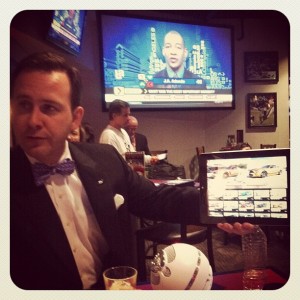
Scott: You can actually build your ideal Mustang and then battle with your brother and see who comes to supremacy on the best Mustang built.
Eric: That’s cool. My brother would come to supremacy. My brother is a car guy, not so much me.
Jay: It’s funny that you talked about Mustang. It’s fascinating to me Ford’s strategic plan as it relates to social, because more so than many, many companies that are active and recognized for their social media prowess, you have such a broad array of buyer personas and buyer circumstances. As you’ve referenced in your talk today, the Mustang customer and the F-150 customer and the Flex customer, as I am, is a different audience. Yet, it’s all still Ford. How do you balance that? How do you bake consistent attributes into all the things you do social, but yet still do things that are brand specific so that they’re highly relevant?
Scott: Well, we just market to people who drive. That’s pretty much it.
Eric: Keep it simple.
Scott: We have to. We absolutely have to. When you’re doing something like the Mustang customizer . . .
Eric: By the way, Scott’s got the Mustang customizer flowing on his iPad, and it’s pretty awesome.
Jay: It is pretty awesome. I’ll take a picture of it for the podcast.

Scott: And see you’ve got the name of who did each one there. So, I think the important part is understanding your buyer persona. We came up with an ad for Mustang that was even too racy for Mustang owners. We wanted to see if we could build a little bit of attention around the Woodward Dream Cruise, which is a big auto thing in Detroit. A whole Saturday afternoon, people take their vintage cars, and they drive them up and down Woodward Avenue in Detroit. It’s so much part of the car culture. People love it, and they come from miles and miles around to show off their cars. So we had a billboard ad that we were getting ready to promote for the Mustang. I don’t think I have a photo of it here. If I can get it, I’ll share it with you guys to give to your listeners. It was on the wall of our agency, and I took a picture of it. It was a Mustang peeling out, just smoke coming out of the rear tires, and you had this white box above it that looked like the Surgeon General’s warning. It said, “Warning: May cause pregnant women.” Now that’s very different from . . .
Jay: I like it.
Scott: That’s Mustang. That’s very different.
Jay: That’s more like that crazy Kia ad from yesterday which was just . . .
Scott: Boy, that was something, wasn’t it? They’ve gone a long way. But even for Mustang, our brand team determined that was a little too racy.
Jay: A little too much.
Scott: We would never do that for something like the Focus or the Flex or, God forbid, an electric vehicle.
Eric: I’m thinking of two songs in particular by this band I like called the Drive-By Truckers.
Jay: I love those guys. DBTs, nice.
Eric: They make a reference to “I used to go out in a Mustang. Me and your mama made you in the back.”
Jay: You should be sponsoring their tour.
Eric: Yeah, so I know of one band that would stand behind that advertisement for sure.
Scott: There you go.
Eric: I was going to ask you about Google+. We’ve kind of talked around that a little bit. Ford is working very closely with Google on the development of Google+. Give us some context around that. Scott just gave about an hour long talk, super detailed, super fascinating about Ford and Google +.
Jay: Send us your slides and we’ll link them up from the podcast notes.
Scott: All right.
Eric: Ford’s evolution on Google+. What’s worked well for your guys, and what do you see as the next thing that you’re going to be working on, on the platform?
Scott: Give us some time to perfect this one first. As I mentioned in the Q&A there, we always have to be ready for what’s next, but I think we have to master the major ones that are here. I really feel like we’ve just gotten to the point where we’re getting more out of Facebook than we ever have before. We’ve reached a critical mass with a number of our pages. The Mustang page has over 2.7 million fans right now. The Ford page has 1.6 million. Once you hit that 1 million mark, there’s a natural momentum that takes place. You kind of can take a hands-off approach in terms of the build of the base. You still have to put content in there, but it takes on a very, very different flavor at that point.
Similarly, I think there’s a lot more potential, as I alluded to, with Google+ than we’ve even given it credit for. The notion of having a single Google+ page for the entirety of Ford Motor Company globally is really, really significant. If we can create a circle for Germany, and it’s only German language updates and it’s tied to Ford.de, think of the potential there where we can really have a unique and intimate relationship with those fans and give them exactly what they want.
Jay: People then opt in for the communication modality and topic that they want. They basically select their own relevance. As you mentioned earlier today, it’s much more similar to what we see in email.
Scott: Absolutely.
Jay: This is the topic of my conversation tomorrow, 10:30 at Social Fresh.
Scott: You could think of Google+ potentially as a sophisticated email platform. It just happens to take place in a more real-time environment. It has search implications there to a much greater degree than an email newsletter. You’re giving people the exact content that they want in the mode they want it delivered.
Jay: It becomes Facebook but upside down. Or instead of you shooting in the dark hoping that you’re relevant, people tell you what’s relevant.
Scott: Well, that’s one way of looking at it. When I did an analysis of this, I said, “Think about the evolution of Facebook versus the evolution of Google+.” Facebook was an inside out approach. It was started by Mark Zuckerberg within Harvard, and it eventually branched out to other universities and then to the rest of the world as we know it today. Now, it’s integrating itself into lots of different web products. Google, on the other hand, has basically bought, acquired, or built sections of the Web that you can’t do without, and everybody has a piece of, whether it’s search or video or blogging or 28 other things, and they’re bringing it all together with Google+, which I think is a much more powerful connection, because again, it’s about weaving social into everything we do rather than making you go to a single platform.
Jay: Absolutely. Google has so many more advantages. The only thing that Facebook really has going for them, and it shouldn’t be dismissed, is single sign on. They have become the passport of the Web the way that Microsoft wanted to be with Passport years ago and failed. That’s not an insignificant advantage.
Scott: I’ll take it one step further. Thinking of it from a retailer’s perspective, if we’re able to create a customer experience on our own websites with a single sign on, whether it’s Google or whether it’s Facebook, we’re suddenly going to have access to a whole bunch of social data about somebody and their behaviors that will help tailor customer service, our next email campaign to them, etc., to be able to know what really makes them tick. Now, if we come to this split in the road where it’s either Facebook or Google+ and we’re only getting a certain portion of their life and their actions in one versus the other, we’re going to have to make that decision.
Jay: That’s why I’m so bullish on Janrain as a platform and their social sign in capabilities. I’ll be talking about that a little bit tomorrow. I just really think they’ve got it figured out. Those guys are going to get bought for a bunch of money, because it’s just really, really effective.
Scott: Sign me on.
Jay: Exactly. Let’s talk about our famous segment, famous here on the second episode, called . . . what did we call it? Making it Work.
Eric: I think it was called Working Out.
Jay: Working It Out.
Eric: Work It Out.
Jay: Work It Out.
Eric: Cue Work It Out theme music.
Scott: Making it Work Out.
Work It Out
Jay: Making it Work Out. Cue Work It Out theme song. This is the section of the show where we actually try and help a podcast listener who has a social media question or concern, and we turn to Eric Boggs and our special guest to try and solve that problem. This week, we actually have a question from a relative of mine. My uncle, Lloyd Meyer, is the COO of Leo A Daly and Associates, which is one of the top five architecture firms in the world. I don’t know why he couldn’t just ask me this question. It actually makes me feel a little bit uncertain that he has to go through the podcast process. He couldn’t just call me.
Scott: What’s his name?
Jay: Lloyd Meyer. Clearly I don’t know anything.
Scott: Uncle Lloyd. Hello.
Eric: Hey Jay, could you please ask a social media expert this question?
Jay: Exactly. Ask Scott Monty, because your book doesn’t mean anything. So, the question is, obviously, Ford Motor Company is a household name and has 1.6 million Facebook fans, etc. and has a lot of social chatter just day to day. In his case, it’s an architecture firm, albeit a large one. Their customers are very distinct. They’re municipalities. They’re Native American tribes, things like that. Very classic B2B. What should their play be in social media, and what is the role for something like Google+ or Facebook in their world?
Eric: I’ll defer to our special guest, Scott Monty, on this one.
Scott: Excellent question, Uncle Lloyd. I’ll see you at the family barbecue to follow up on this one.
Jay: Next time you’re in Omaha. Four Jacks and a Jill.
Scott: Get some good steaks. So, you’ve got to ask yourself this first, Uncle Lloyd and everyone else listening. Where are your customers? What are they doing? Are they on this stuff? Are they on Google+? Are they on search for that matter? Are they on Facebook? Determine where your customers are and weave that into it. It’s not like you need to avoid it simply because it’s B2B. Last time I checked, people are behind these businesses. It’s not institutions talking to each other on Twitter. It’s people. So get that notion out of our head that it doesn’t matter because it’s B2B. But then ask yourself, “Where are they spending their time? Where are they making their decisions? Who are they talking to, and where do they get their information?”
Jay: I always feel like in a B2B circumstance, the social media playbook always tilts toward content. It becomes more of a content marketing play. These guys have massive expertise, especially in certain types of architecture. They do a lot in healthcare, a lot of hospital design, a lot of casino design. You could go deep in those verticals. SlideShare would be a great opportunity, infographics, podcasts like this one. You could do a lot of things.
Eric: Think about the things that they know about designing a hotel or designing a casino, whatever the inner workings behind these massive services machines. There’s got to be some remarkable content to be shared.
Jay: Helpful information well merchandised always works, always.
Scott: Helpful information well merchandised always works.
Eric: Everyone can tweet that.
Jay: Thank you. I just made that up. I should do this for a living.
Eric: You do.
Jay: There you go, Uncle Lloyd. You can call me next time. Or Scott Monty, whichever you want.
That’s going to do it for this episode of Social Pros. Next week, a man we know, Justin Levy from Citrix Online will be joining us on Social Pros. I want to thank Eric Boggs, the presenting sponsor of Social Pros from Argyle Social. Also InfusionSoft, we use for all of our email marketing, and then Jim Kukral from DigitalBookLaunch.com. Thank you to Mr. Scott Monty.
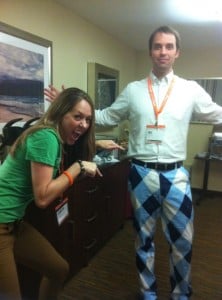
Scott: My pleasure. One final question, if I may ask you two, Eric, where do you get your pants?
Eric: The question is in regards to the argyle pants I have on. It’s my game day uniform when I give a talk. I like to get my pants at LoudmouthGolf.com.
Scott: Nice.
Eric: And I prefer the blue argyle pattern.
Jay: Why aren’t they a sponsor? Why isn’t LoudmouthGolf.com a sponsor? Let’s make it happen.
Eric: I don’t know. With the amount of Twitter feedback I generated with my pants today, they should maybe ship me the matching blazer. Hint hint, wink wink, nudge nudge.
Scott: And the knickerbocker version, too. Right?
Eric: Yeah.
Jay: Thanks everybody. We’ll see you next week.
